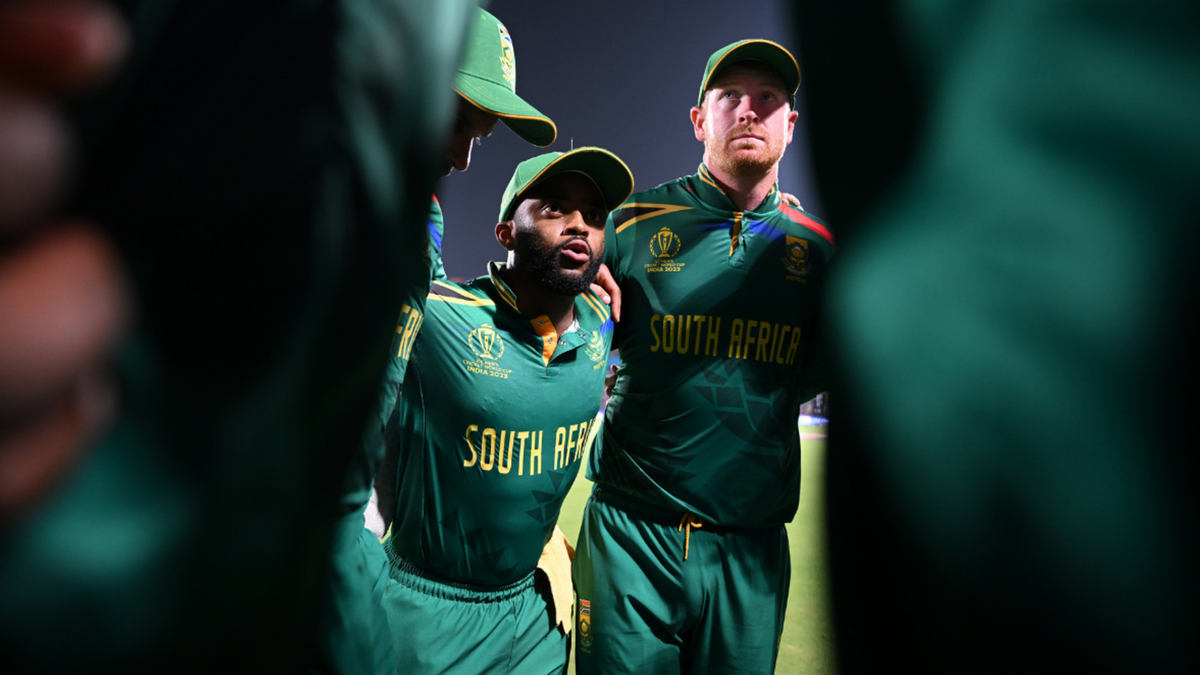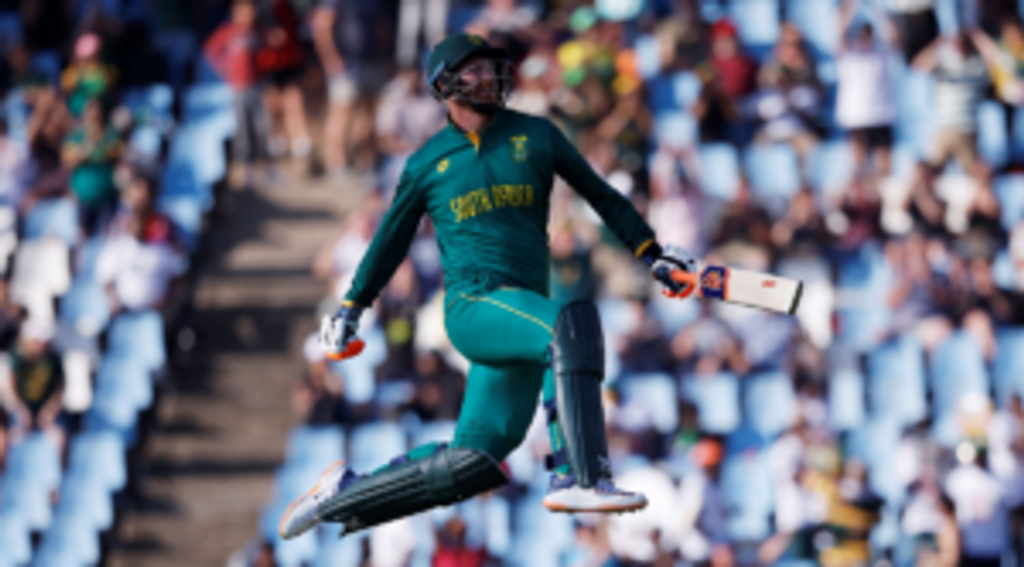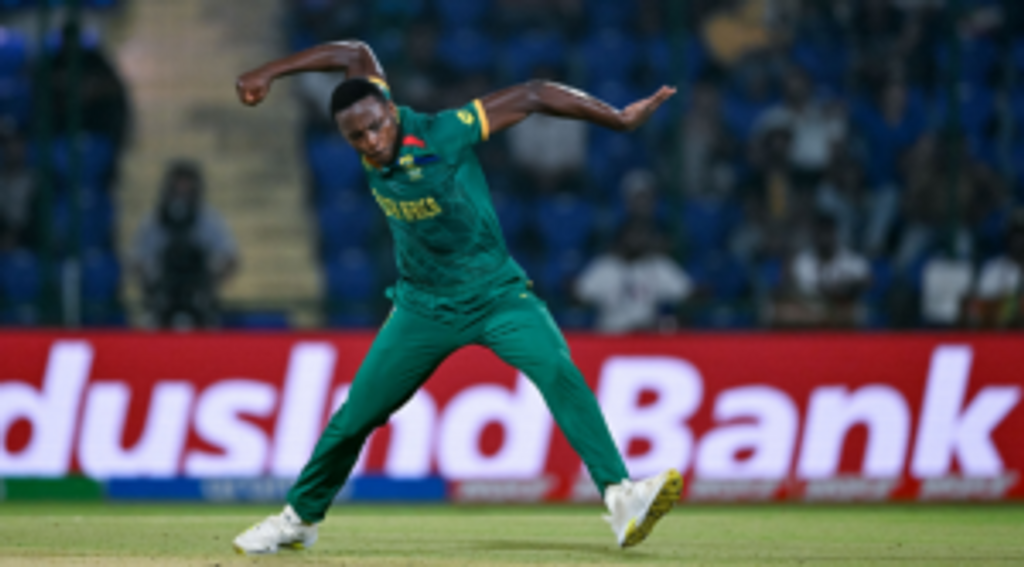
It would be kind to describe South Africa’s 2019 World Cup as a car crash.
To bet on the World Cup with our Match Centre Partners bet365 head here.
Set against a backdrop of injury woes and off-field chaos, they sunk further into the depths of hopelessness with each of their five defeats.
Seventh in the table was an ill-fitting final curtain on what remained of their golden generation, with the same core that had come so close to glory in 2015 subsiding meekly four years later. But, out of that despair, a hardened batch of Proteas heavyweights have emerged, and they look hell-bent on avenging the numerous mythologies of South Africa’s World Cup horrors.
After 2019, South Africa were left with a sparsely experienced group of players, several carrying the deep scars of that competition, with which to rebuild. Rassie van der Dussen, Quinton de Kock, David Miller and Aiden Markram formed the core of the batting unit set for another four-year cycle.
JP Duminy, Hashim Amla and Imran Tahir all hung up their boots, while Dale Steyn never found his way back into the ODI side after missing the 2019 tournament with a shoulder injury. Following the controversy which surrounded AB de Villiers’ proposed return to the side, which loomed large on South Africa’s shoulder during their campaign, any talk of a potential international comeback was put to bed in the run-up to the 2021 T20I World Cup. As for Faf du Plessis, the century he scored in Manchester against Australia in South Africa’s final match of the 2019 tournament turned out to be in his last match as fifty-over captain. Quinton de Kock was lined up to take over in the following months.
Building the batting arsenal
A fresh start bore instant results. South Africa beat an England side at the start of their post-Lord’s comedown in their first ODI after the World Cup in early 2020 before registering three thumping wins over Australia. The origins of the central aspect of their 2023 powerhouse batting lineup came from that series whitewash – the emergence of Heinrich Klaasen and David Miller as the axis of the middle order.
The pair shared a 149-run fifth-wicket stand as Klaasen put on his maiden ODI century in the first match of that series before they combined again to get South Africa over the line in the third. Since then, the Klaasen and Miller fifth-wicket partnership has scored more runs than any other for the same wicket. Together, they average 75.7 and score at 8.53 runs an over. The full force of what the two can do when they come together was felt again by Australia in South Africa’s final bilateral series before they flew out to India this year. A 222-run stand off just 94 balls was a warning shot of the kind of destruction South Africa could wreak when they get it right.
[caption id=”attachment_587436″ align=”alignnone” width=”907″] Heinrich Klaasen celebrates after scoring 174 against Australia[/caption]
Heinrich Klaasen celebrates after scoring 174 against Australia[/caption]
The effect the newfound middle-order consistency had was to take pressure off the top order. Before 2020, De Kock was the side’s leading run scorer in five of their six previous series. In the two and a half years before the 2019 World Cup, South Africa averaged 44.49 for each of their top three wickets; that fell to 35.39 for wickets 4-7. In stark contrast to 2020 onwards, while the average between the top three stays almost identical (44.5), their average runs per wicket for batters 4-7 has risen to 43.31. More significantly, their current cohort at Nos.4-7 has shared more than double the number of century stands as their 2017-2019 predecessors in three fewer matches.
With the middle-order instability rectified, it took shuffling their pack of 2019 veterans to land on the right combination.
The question of who would partner De Kock at the top still loomed large until nine months ago. Having tinkered with Markram, Reeza Hendricks and Janneman Malan at the top, the baton passed to Bavuma. Since then, he’s averaged 68 in 12 innings, scored three centuries and struck at over 100. By average, De Kock and Bavuma are now South Africa’s most prolific ODI opening partnership. Another piece slotted into the puzzle.
With Markram moved firmly into the No.4 position, he finally broke off the shackles in ODI cricket with 175 against the Netherlands, ending a torturous five-year wait for a three-figure score. He followed that century with two more in his next six innings. Tie that in with Van der Dussen re-cementing his position at No.3 with a century against Sri Lanka and a 60 against England, and South Africa have landed upon the most complete batting line-up they’ve had in years.
[breakout id=”0″][/breakout]
Since the beginning of this year, only South Africa and India have averaged more than 40 runs per wicket. With only 0.42 runs separating them on 42.29 and 42.71 respectively, they are head and shoulders above the chasing pack, with Pakistan in third place on 36.66. But South Africa have scored their runs at 6.8 runs per over – a run every two overs more than the next fastest-scoring team (England). They are also the only side to score more than 400 runs in an innings more than once – those two instances in addition to the 399 runs they scored against England in Mumbai.
Backing the specialists over the all-rounders
As for the bowling, that’s where the question mark remains. In a near-mirror image of 2019, South Africa’s bowling plans were blown apart when it was confirmed that Anrich Nortje would miss his second consecutive World Cup. Once again, Kagiso Rabada has been left to lead an attack missing its fastest bowler. He’s also dropped down to first change, Marco Jansen and Lungi Ngidi preferred with the help of the new ball rather than in the middle overs. Against Sri Lanka, that decision was shown to be a wise one. When both Ngidi and Jansen were carted by Kusal Mendis, it fell to Rabada to make the breakthrough.
Another by-product of Nortje’s injury is that Gerald Coetzee, having only played 20 ODIs before the tournament, has been catapulted into the tournament to keep up the pressure alongside Rabada in the middle. After a relatively tough experience against Sri Lanka, made bearable by wickets late on, Tabraiz Shamsi was preferred for a turning surface in Lucknow. The feeling was that, compared to previous campaigns at least, the attack was light on firepower. Sisanda Magala, although only eight ODIs into his career, was another costly injury absence as someone primed to play a role at the death in particular.
That feeling was confirmed when Roelof van der Merwe and Scott Edwards were able to score 64 rapid runs at the back-end of the Netherlands’ innings in Dharamsala. The bowlers looked powerless at the death, and there seemed to be no flexibility in their attack to adapt to such a threat.
While the quality is still there, and Ngidi in particular came up well against Australia and Coetzee came back well against England, South Africa already had big totals on the board to bowl at in all of their wins in the tournament so far. Against Sri Lanka, albeit on a pitch that produced the most runs ever in a single World Cup match, at points, they looked ragged.
[caption id=”attachment_587437″ align=”alignnone” width=”905″] Kagiso Rabada celebrates after dismissing Kusal Mendis in South Africa’s 2023 World Cup opener[/caption]
Kagiso Rabada celebrates after dismissing Kusal Mendis in South Africa’s 2023 World Cup opener[/caption]
Despite the injuries, South Africa haven’t been tempted to bolster their lower order with bowling all-rounders to mitigate a batting collapse or give a weakened bowling attack more to defend. It’s a pattern that’s run through their World Cup preparations.
In 2019, Chris Morris was brought in to replace Nortje. In every match in the competition, at least two of their five front-line bowlers could be considered all-rounders. During the two years before the tournament, Morris, Dwayne Pretorious, Wayne Parnell, Andile Phehlekwayo and Wiaan Mulder all played more than ten ODIs each. Since January 2020, of all the bowlers who’ve played more than ten games, only Jansen and Phehlukwayo can be considered all-rounders.
South Africa have moved away from the strategy outlined by Du Plessis in 2019. “In the Champions Trophy we had a lot of all-rounders,” he said at the time, responding to South Africa’s plans to mitigate for injured fast-bowlers. “So we batted down to seven, eight, nine, we have a lot of all-rounders and not a lot of specialists.”
This time though, South Africa have backed their specialists to get the job done, rather than turn to all-rounders to compensate for other shortcomings.
[breakout id=”2″][/breakout]
The signs are promising for South Africa with four matches down in the tournament. The work they put into rebuilding their side over the last four years seems to be paying off, even if defeat to the Netherlands showed the potential pitfalls of their current balance. It is telling though that that defeat did not deter them off Plan A. Against England they once more backed the specialists and this time their faith was rewarded in spectacular fashion.
It’s worth remembering that the journey they’ve been on to get here wasn’t linear. After forfeiting an ODI series against Australia, they looked in danger of not making this World Cup altogether. They didn’t play ODI cricket for a year during the COVID-19 pandemic, and between the beginning of 2020 and the end of 2022, they had a worse win percentage than seven other teams in this tournament. It’s taken experimentation, and a willingness to stick with players until they produce the rewards to get to this point.
For the moment, their patience is paying off and they’re reaping the rewards of tearing up the formula and starting again. Regardless of where they end up, what they’ve already managed to achieve is a remarkable turnaround.







